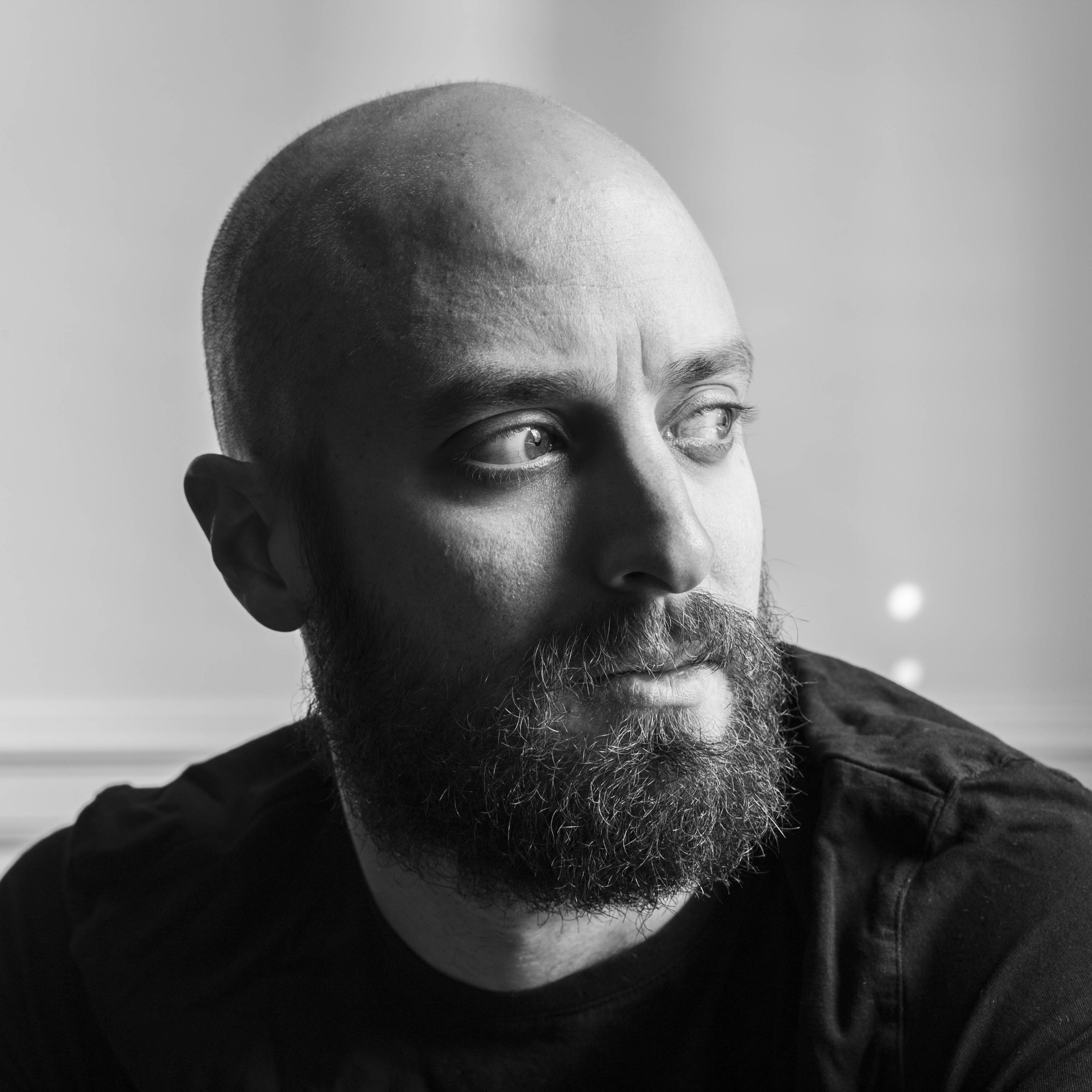Jon Adam Ross
 Wisdom is a word that makes me uncomfortable. I think it’s because it sounds proprietary. Wisdom is something that can be acquired and dispensed. It’s an asset. I feel more comfortable with the words ‘context’ and ‘perspective’ instead. If the aim of the first proposition in Rabbi Sid’s essay is to give people access to their inherited (sacred) texts and a toolkit to place those texts and their teachings in context with modern global thought so as to provide people perspective, then I’m all in. And, indeed, that completely defines my work as an artist.
Wisdom is a word that makes me uncomfortable. I think it’s because it sounds proprietary. Wisdom is something that can be acquired and dispensed. It’s an asset. I feel more comfortable with the words ‘context’ and ‘perspective’ instead. If the aim of the first proposition in Rabbi Sid’s essay is to give people access to their inherited (sacred) texts and a toolkit to place those texts and their teachings in context with modern global thought so as to provide people perspective, then I’m all in. And, indeed, that completely defines my work as an artist.
I am the founding artist of The In[heir]itance Project, which is a devised-theater company that puts communities’ lived experiences in conversation with their inherited sacred texts. We define sacred text as any story that holds meaning for the community. They could be ancient religious, mythic, cultural or patriotic texts, personal and universal stories, attitudes and archetypes, local lore (current or historical), or popular media and culture. The Torah fits in there. So does the Bhagavad Gita, the Quran, the Constitution of the United States, and the lyrics of Bob Dylan. Each micro and macro community has its own sacred texts. For Jews, those texts are the Tanach, the Talmud, the niggunim at seudah shlishit and liturgy, among other things.
Traditional theater begins with a script, written by a playwright alone in a room, typically in their pajamas. Devised theater ends with a script after time spent generating material with a community. But most audiences only experience art when it’s finished. And most artists only share their art when it’s finished. We invite everyone into the process from the first moment as participants, not just as witnesses. We want them wrestling with, engaging with, connecting with, sharing their sacred texts and their lived experiences. And we want them to feel empowered to help shape the art being made from those texts and experiences. We have found that through this work, people take ownership to the point of having full comfort expressing every opinion they have of the finished artistic product. We know that our job is done when someone can see the final product and say “Hey, thanks for including my idea in there. I still think you’re wrong about how you interpreted x!”
That tells us that they feel ownership enough over the ‘x’, the ‘sacred text’ (which, by the way, might be from the Torah or from a childhood memory) to advocate on its behalf. It gets really interesting when we put folks in conversation with each other. In Charleston we worked with the Jewish and black (Christian) communities. We were making a play about Rebecca’s womb, from the book of Genesis. A lot happened in that womb. We cast the play with two actors (one black, one white). We’d walk into an open rehearsal in a synagogue and people would look at the actors and point to the white actor and say, “You’re Jacob, right? And he’s Esau?” They just assumed the white, Jewish actor was playing the ‘good guy.’
When we walked into a church, a black Pastor looked at the actors and pointed to the black actor and said, “You’re playing Esau, right? And the white guy is Jacob?” He didn’t ask this because he thought the black guy was playing the villain. In the black church, they only have the pshat (plain meaning of the text). And in the Torah/Bible, Jacob is a thief and Esau is the forgiver. In fact, many families who lost loved ones in the Mother Emmanuel massacre in 2015 cited Esau in their inspiration to forgive the shooter. But rabbis have spent centuries writing interpretations to paint Jacob as a hero and Esau as evil. Christians don’t have access to that spin. When you put both groups in the same room to make art from their jointly inherited sacred text, you get growth, context, and perspective.
That is our work.
________________________________
Jon Adam Ross has performed in over 90 cities around the globe and is the founding producing artist of The In[heir]itance Project – a national devised-theater series inspired by sacred texts. Credits include: a dog, a 2,000 year-old bird, an elderly orthodox Jew, a spurned housewife, a horse, a British naval officer in 1700’s Jamaica, a goat, Jesus Christ, a lawyer, a hapless police chief, and a cyclops.



December 20, 2018 @ 9:56 am
I love how this essay opens my eyes to things in Jewish texts that I might not have noticed before. #awesome